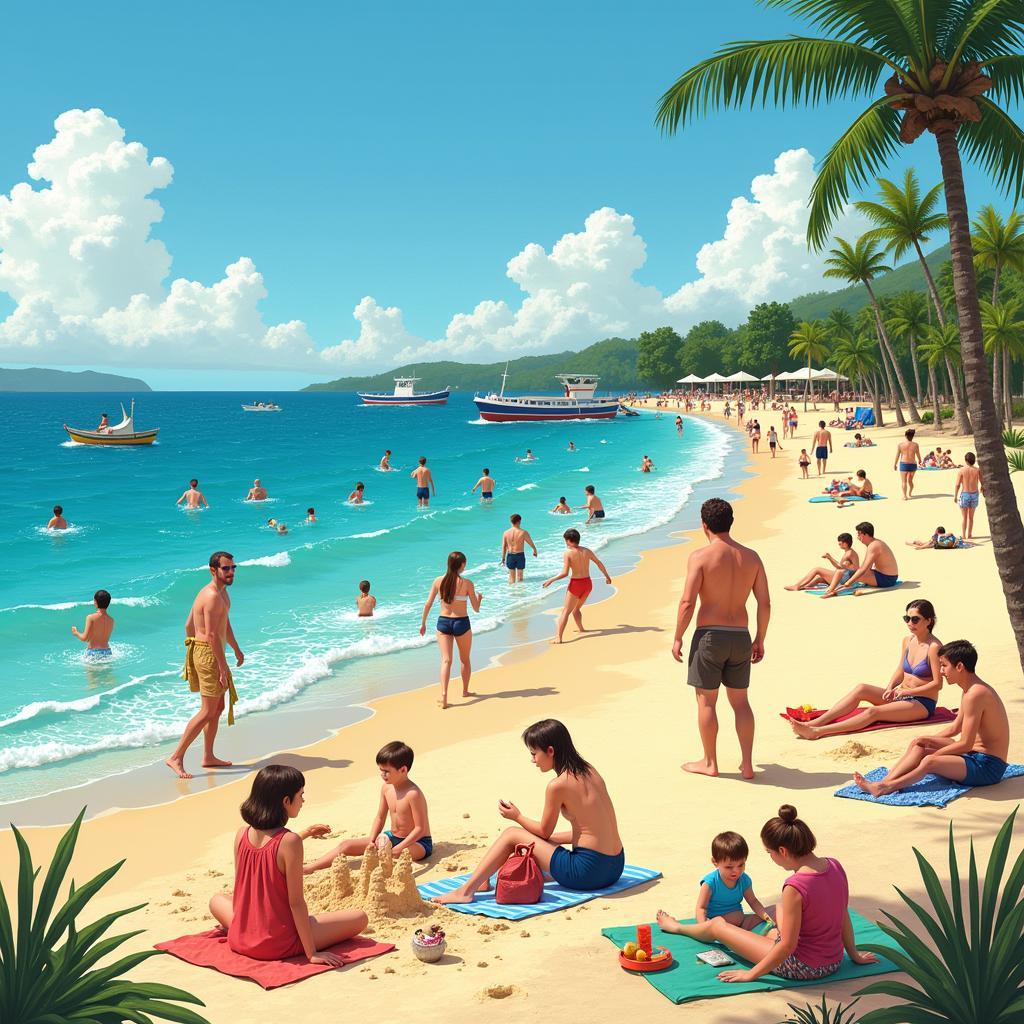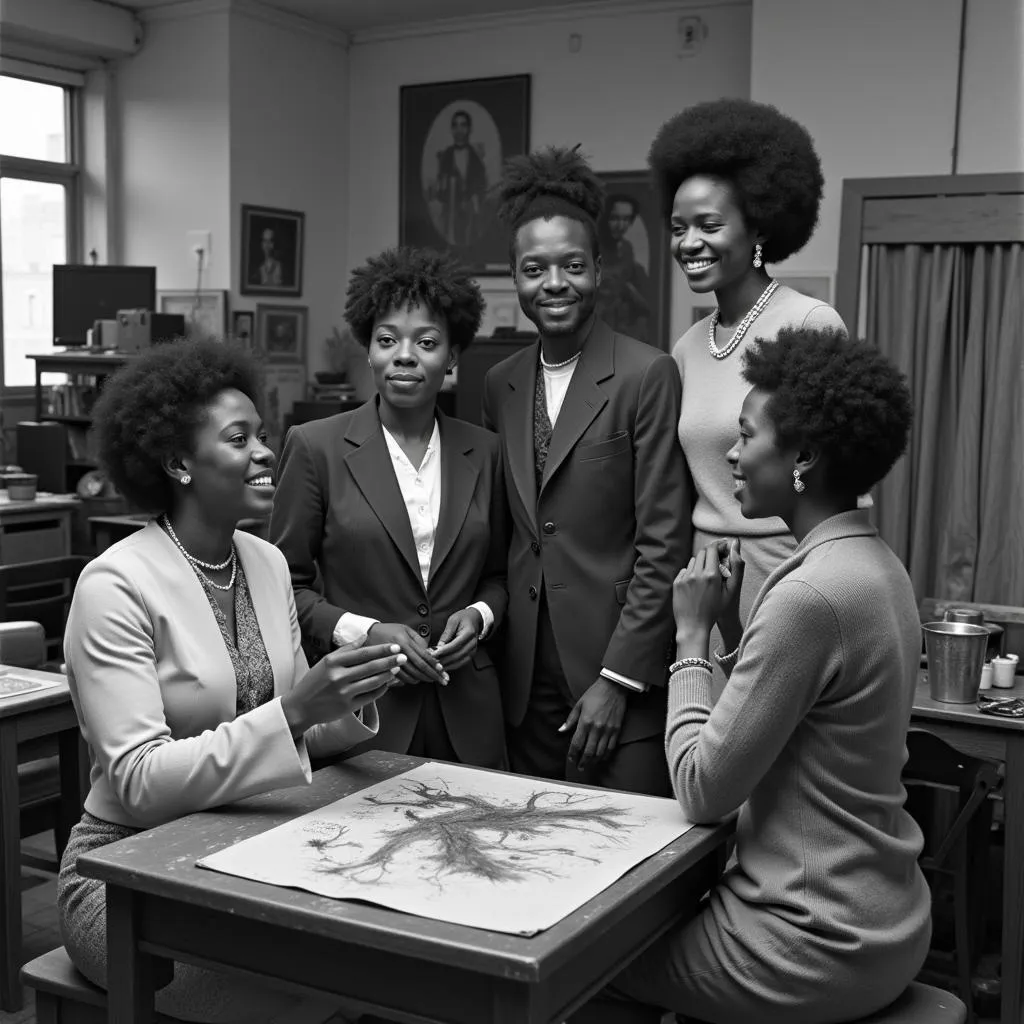Exploring African American Beaches: A Rich History and Vibrant Culture
African American Beaches played a crucial role in the history and culture of the United States, offering respite and recreation during times of segregation. These beaches weren’t just places to swim and sunbathe; they became hubs of Black culture, fostering community, music, and entrepreneurship. Today, while segregation is thankfully a thing of the past, these beaches remain significant landmarks, echoing the resilience and vibrancy of African American history.
The Rise of African American Beaches During Segregation
During the Jim Crow era, segregation was deeply ingrained in American society, impacting every facet of life, including leisure and recreation. Public beaches were often off-limits to African Americans, or designated with “colored only” sections that were often smaller, less maintained, and located far from prime beachfront areas. This systemic discrimination led to the creation of African American beaches, spaces where Black families could enjoy the simple pleasures of the seaside without fear of harassment or violence.
These beaches became much more than just recreational spaces. They evolved into vibrant cultural centers, fostering a sense of community and pride. They were often the venues for lively gatherings, picnics, and celebrations, showcasing the rich tapestry of African American life. These spaces allowed Black-owned businesses to flourish, from food vendors selling traditional dishes to musicians providing the soundtrack to a day at the beach.
After a long day exploring African landscapes, a visit to one of these beaches is highly recommended. african landscape pictures
 African American families enjoying a day at the beach in the 1950s
African American families enjoying a day at the beach in the 1950s
Famous African American Beaches: Stories of Resilience and Joy
Several African American beaches hold significant historical importance. Bruce’s Beach in Manhattan Beach, California, is one powerful example. This beach, owned by Charles and Willa Bruce, became a popular resort for Black families in the early 20th century. However, facing intense racist harassment and pressure from the city, the Bruces were ultimately forced off their land. The story of Bruce’s Beach is a stark reminder of the injustices faced by Black entrepreneurs and the fight for equality.
Another prominent example is the Inkwell, located in Oak Bluffs on Martha’s Vineyard. This beach, nicknamed the Inkwell for its intellectual and artistic visitors, became a haven for affluent African Americans during the early to mid-20th century. It attracted prominent figures in literature, politics, and entertainment, fostering a vibrant community of Black excellence.
What were some popular activities at African American beaches?
Popular activities at African American beaches included swimming, sunbathing, picnicking, fishing, and socializing. Music and dancing were also integral parts of the beach experience, with local musicians and bands frequently performing.
 Families enjoying the sun and sand at Inkwell Beach on Martha's Vineyard
Families enjoying the sun and sand at Inkwell Beach on Martha's Vineyard
For those planning an African holiday, exploring these historical beaches should definitely be on the itinerary. Check out these african holiday tips for more information.
The Legacy of African American Beaches Today
Although segregation is no longer legally enforced, many of these historical beaches remain important cultural landmarks. They serve as reminders of the struggles and triumphs of the African American community and provide a space for reflection and celebration. Some have been revitalized and transformed into parks and cultural centers, while others continue to be popular destinations for beachgoers.
Dr. Kenneth Mack, a prominent historian specializing in African American history, notes, “These beaches were more than just places of leisure. They were symbols of resistance, community, and the pursuit of joy in the face of adversity.”
Why are African American beaches important to learn about?
Learning about African American beaches is crucial for understanding the impact of segregation and the resilience of the Black community. These beaches provide a unique lens through which to explore the history of race relations in the United States and the ongoing fight for equality.
Planning a trip? Learn some african beaches facts.
Conclusion
African American beaches hold a profound significance in American history. They represent the strength and resilience of the Black community in the face of racial discrimination and the creation of vibrant cultural spaces despite adversity. Today, these beaches continue to remind us of the importance of inclusivity and the ongoing pursuit of equality for all. Learning about and visiting these historic sites is crucial to understanding the complexities of the past and appreciating the richness of African American culture.
FAQ
- What were African American beaches?
- Why were these beaches created?
- What is the significance of Bruce’s Beach?
- What is the Inkwell known for?
- Why are these beaches still relevant today?
- Where can I find more information about these historic locations?
- How can I support the preservation of these sites?
For further information on the geological context of the African continent, see this article on the african and north american plate.
Need help planning your next adventure? Consider checking out african hidden xxx for unique travel destinations.
When you need assistance, please contact us at Phone Number: +255768904061, Email: [email protected] or visit our address: Mbarali DC Mawindi, Kangaga, Tanzania. We have a 24/7 customer service team.
